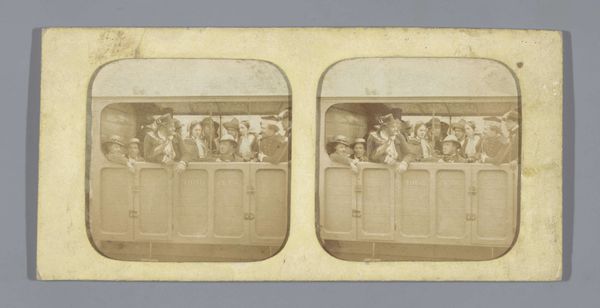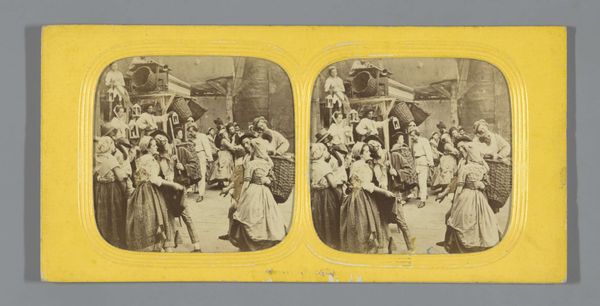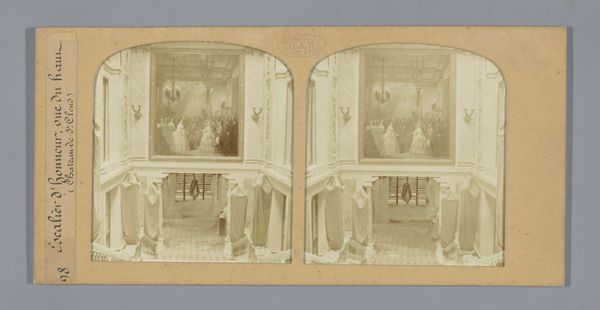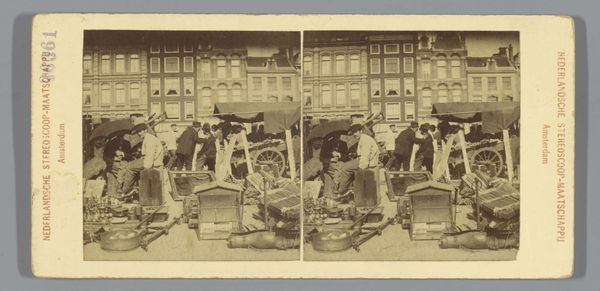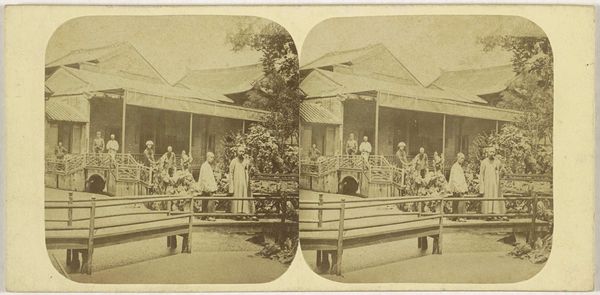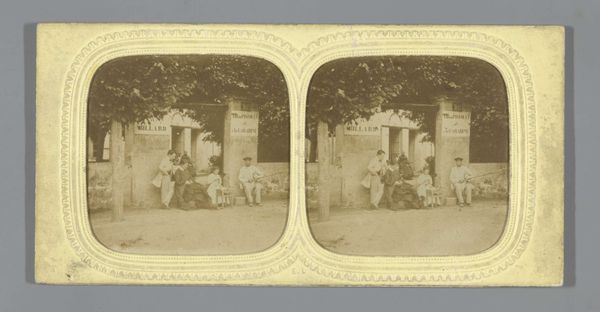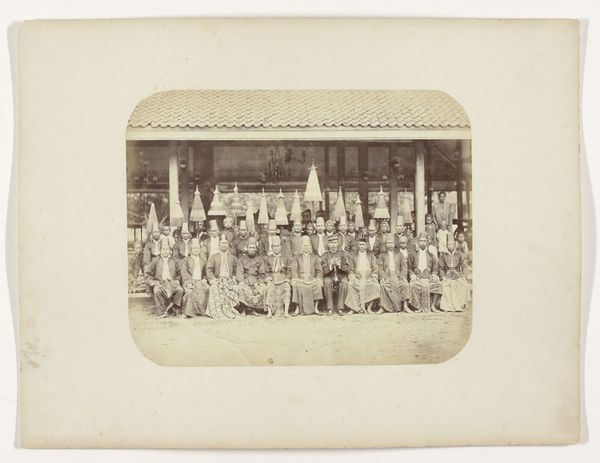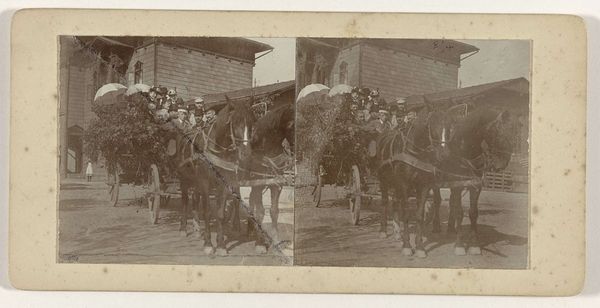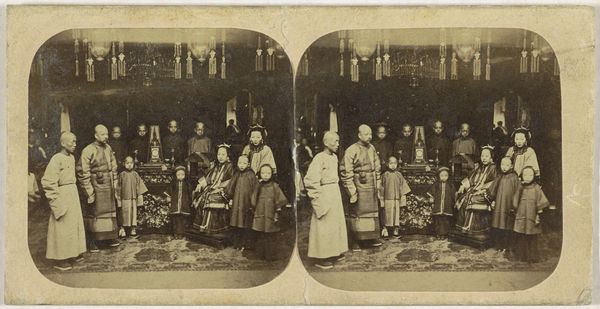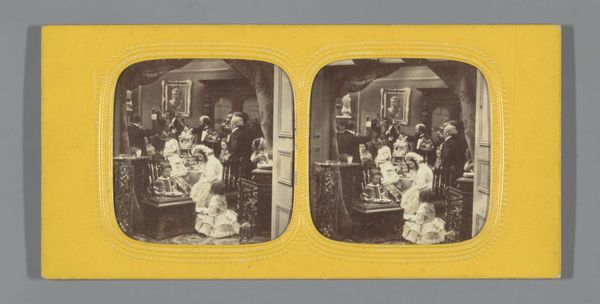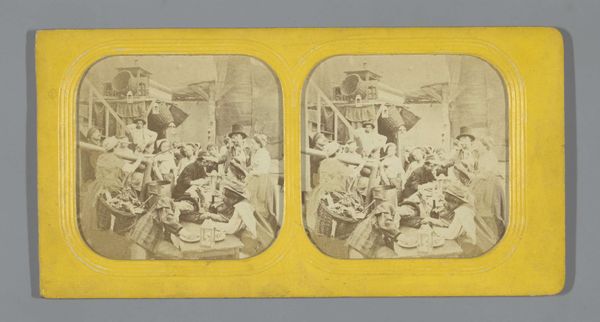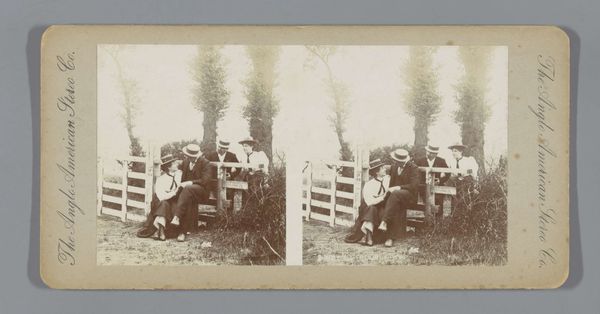
#
faded colour hue
#
aged paper
#
toned paper
#
water colours
#
reduced colour palette
#
muted colour palette
#
coloured pencil
#
watercolour bleed
#
watercolour illustration
#
watercolor
Dimensions: height 85 mm, width 174 mm
Copyright: Rijks Museum: Open Domain
Curator: What a find! This artwork, titled "Gezicht op derde klas staanplaatsen tijdens een paardenrace," offers us a glimpse into the past, created sometime between 1850 and 1864. Editor: It has a curious melancholic feel. It gives off this faded, sepia-toned vibe that speaks of lost moments. What medium is it? Curator: It seems to involve watercolors and colored pencils. The muted palette reinforces this impression, doesn’t it? A society watching another pastime. A reflection on class? Editor: Absolutely. Looking at this image through a materialist lens, I'm struck by the economics of leisure and visibility it reveals. It appears mass-produced: the materials probably not expensive and affordable to more people, indicating a shift in visual culture during that era. How accessible were such images and to whom? The labor involved in creating and distributing them is a significant factor. Curator: I wonder about the symbols embedded within this scene, what they would have meant to the original audience and to us now. We can still decipher class differences in the image, despite its flat appearance. Editor: Indeed, you can discern this social stratification not only by how close they can get to the action but even their very means of viewing it. Note also the effect the actual photographic medium has on documenting and perhaps skewing these views. What did they do for a living; and what do these racing events suggest in terms of commodity and gambling? It would be good to know who owned this print and what they expected from viewing it? Curator: You make an important point. It makes one contemplate cultural shifts: the fascination with spectacle. There is the repetitive motif with those frames that compartmentalizes human experience. Do these barriers create the space that reflects this kind of social division? Is this image one piece of visual propaganda, normalizing a form of consumption? Editor: Yes, it could be both. Examining how such artworks functioned within social systems of production, exchange, and reception opens up some interesting questions about cultural memory. Thank you! Curator: I quite agree. Seeing through your lens gave me more food for thought, particularly on issues surrounding visual representation of different groups.
Comments
No comments
Be the first to comment and join the conversation on the ultimate creative platform.
